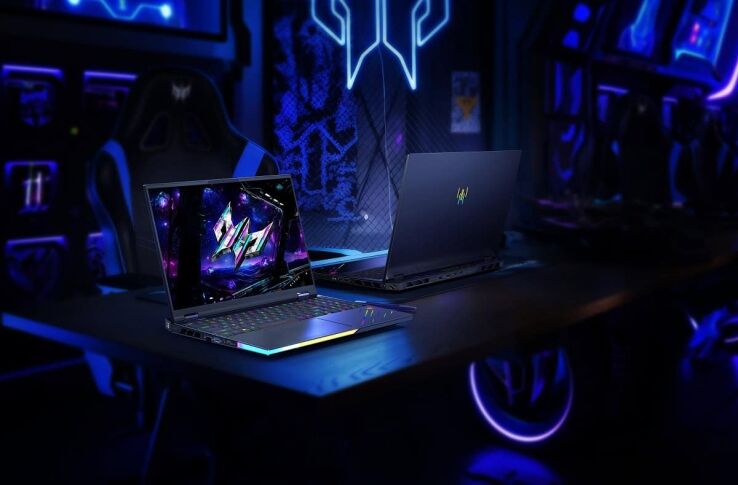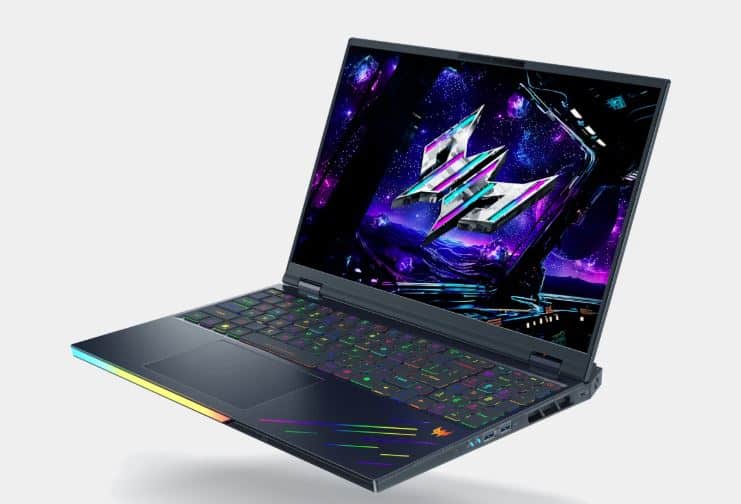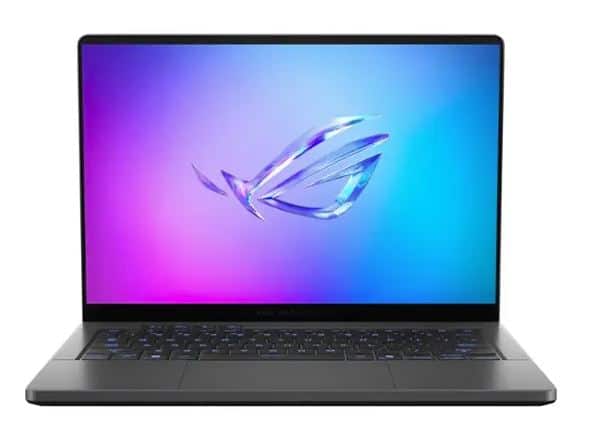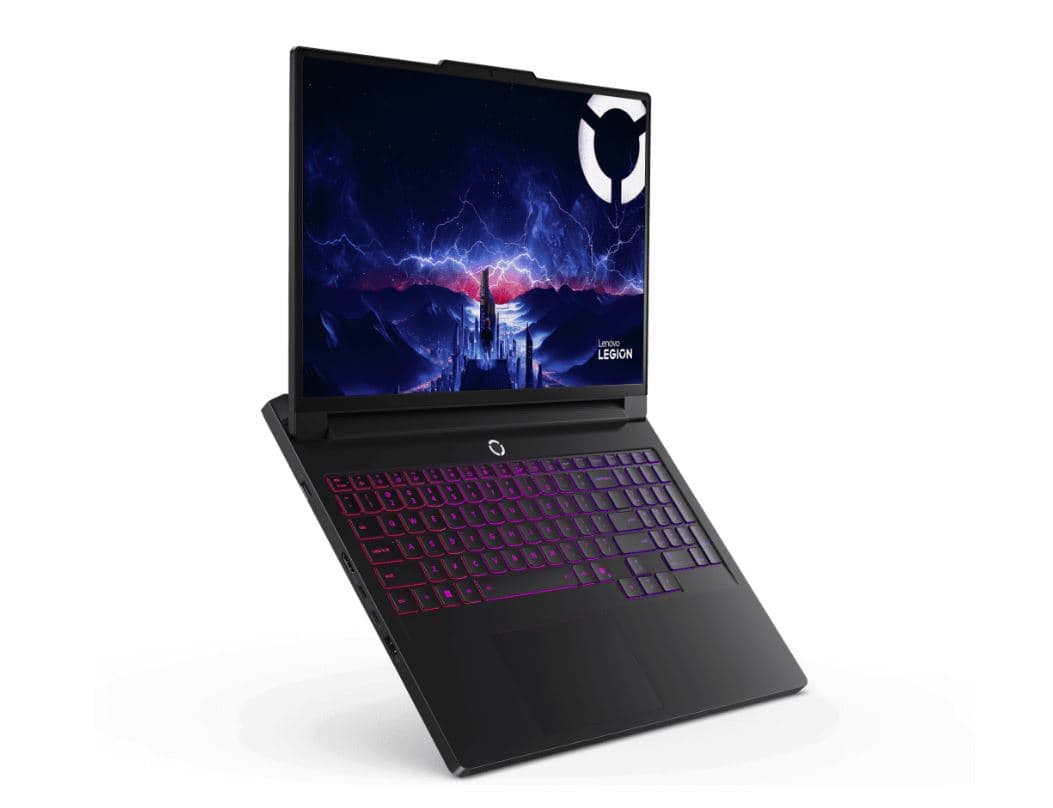Everything we know about the upcoming Nvidia GeForce RTX 5090 laptop range and a look at which models have been unveiled
Updated: Jan 14, 2025 12:07 pm

WePC is reader-supported. When you buy through links on our site, we may earn an affiliate commission. Prices subject to change. Learn more
Nvidia RTX 5090-powered laptops are nearly here! These most powerful of gaming laptops and/or high-end creator machines won’t be hitting the shelves until March but there’s enough information out there on the upcoming devices for us to get very excited about them, and some retailers have already starting listing the first models. As with their desktop counterparts, the early performance data looks very promising in terms of the uplift from the previous generation.
As soon as these laptops become available to buy and the reviews start coming in, we’ll be turning this into a proper buyer’s guide, listing the pros and cons of each to help you pick the right model for your needs. Until then, these are the RTX 5090 laptops we’ve seen unveiled so far and everything we know about them; look further down the page for some more general performance, specs, and pricing information on the new laptop GPUs.
Best RTX 5090 laptops we’ve seen announced so far
Below are the RTX 5090 laptops that have been announced so far which we’ve managed to get a look at. As more appear we’ll be expanding upon this list.
Specifications
- CPU: Up to Intel Core Ultra 9 processor
- Graphics: Up to Nvidia GeForce RTX 5090
- RAM: Up to 64GB DDR5 5600MHz
- Storage: Up to 4TB PCIe Gen4 in RAID 0 (slots support PCIe Gen5)
- Max Refresh Rate: 240Hz
- Resolution: 2.5K
- Panel Type: Mini-LED (100% DCI-P3, G-SYNC, ACR)
Show more
The ROG Strix SCAR is the most high-end gaming laptop ASUS produce, and comes in two sizes: 18-inches and 16-inches. Both sizes of laptops come with a similar Mini-LED screen to last year (with G-SYNC and a claimed 100% DCI-P3 color gamut), but with a new ‘Ambient Contrast Ratio’ (ACR) anti-reflective coating supposedly reduces reflections by 55% and boosts contrast by 4.5 times, but we’ll have to wait and see how accurate this is.
As with last year’s model, ASUS have opted for an Intel processor, specifically the Intel Core Ultra line – we would have liked to have seen an AMD option but we’ll have to wait and see how this performs. Whether you opt for a RTX 5090 GPU in yours or not you’ll get vapor chamber cooling, which is very nice. Some interesting new features including a tool-less bottom (ooh-err) which means you can slide off this part of the case with ease to get access to the upgradable M.2 and RAM slots (two of each), which themselves use screw-less Q-latch designs (though upgrading the WiFi card does require a screwdriver). The WiFi has been upgraded to WiFi 7 and finally the webcam (a weak point of the previous generation) has been upgraded to 1080p resolution.
The ports are pretty much the same as before, though they’ve been pushed back as the air vents have been moved. In terms of aesthetics the lid borrows from previous Zephyrus laptops with a customizable LED strip. There’s also a new 360 degree lightbar surrounding the entire base of the laptop!
Specifications
- CPU: Up to Intel Core Ultra 9 275HX
- Graphics: Up to Nvidia GeForce RTX 5090
- RAM: Up to 192GB DDR5 6400MHz (4 slots)
- Storage: Up to 6TB PCIe Gen5 SSD (M.2 3 slots)
- Max Refresh Rate: 2560 x 1600 / 4K dual-mode (can switch to 1080p for higher refresh rate)
- Resolution: 2560 x 1600
Show more
Another 18-inch laptop, the Predator Helios 18 AI is the most powerful in the Acer range, and comes with similar Intel Core Ultra processor options (specifically up to the Ultra 9 275HX). Besides this you get a frankly ridiculous amount of memory – up to 192GB of 6400MHz DDR5 RAM, which is the most we’ve seen in a laptop – it’s hard to think of many scenarios that would require this beyond extremely demanding workstation tasks but still, it’s nice to see it as an option.
As was the case last year you can pick up this laptop with the 1600p QHD+ screen resolution with a max 240Hz refresh rate, or for the first time you can buy it with a 4K display that runs at 120Hz, but can switch to 1080p resolution with a 240Hz max refresh rate for those times you want that extra edge in competitive gaming. This makes it the only 4K gaming laptop on this list at the present time.
The internals are cooled by an upgraded 6th gen aeroblade fans system, which has more (and thinner) fan blades that the previous generation, which apparently means 10% better cooling performance. The keyboard has been upgrade to the MagKey 4.0 (from the 3.0) and still comes with the replaceable WASD and arrow keys that can we replaced with included mechanical keys and switches. The USB-C switches on the rear have also been upgraded to Thunderbolt 5, the SD card slot reader is a now a full-size one, rather than a mini, and the number of speakers has been increased to six from two – so hopefully better audio will result.
Specifications
- CPU: Up to Intel Core Ultra 9 285H / AMD Ryzen AI 7 350
- Graphics: Up to Nvidia GeForce RTX 5090 (Intel version) / RTX 5070 (AMD version)
- RAM: Up to 64GB LPDDR5X 7467MHz (Intel version) / 32GB LPDDR5X 7500MHz (AMD version)
- Storage: unknown
- Max Refresh Rate: 240Hz
- Resolution: 2.5K
- Panel Type: OLED (100% DCI-P3, G-SYNC)
- Weight: 1.85kg
Show more
The ASUS Zephyrus line offer fantastic slimline, nice looking gaming laptops which also function well as powerful productivity machines for creators – competing with the likes of the MacBook Pro but with far improved gaming performance. This year’s model comes with the same chassis that the 2024 variant had, which was a complete refresh of what came before – an impressively light (1.85kg) and thin (1.49cm) design that looks very slick.
As with last year, the smaller Zephyrus G14 (which we generally rate as one of the best 14-inch gaming laptops every year) will not be coming with the most powerful GPU option, which makes sense given the size limitations of the 14-inch chassis. Even in the 16-inch model, the TGP power limit will apparently be capped at 115W compared to the mighty Strix SCAR above that caps out at 175W. Despite being a thinner machine you still get Vapor Chamber and liquid metal cooling though, which is nice to see. Unfortunately, although AMD Ryzen CPUs can be equipped with this laptop, the RTX 5090 model is limited to the Intel Core Ultra-powered laptops.
All versions of this machine come with a 2.5K OLED display that comes with G-Sync and 100% DCI-P3 coverage, and has a max refresh rate of 240Hz. The laptop also comes equipped with a WiFi 7 card.
Specifications
- CPU: Up to Intel Core Ultra 9 275HX
- Graphics: Up to Nvidia GeForce RTX 5090
- RAM: Up to 64GB DDR5 6400Mhz
- Storage: Up to 2TBSSD
- Max Refresh Rate: 240Hz
- Resolution: 2560 x 1600
- Panel Type: OLED
- I/O ports: 2x USB-C (140W power delivery), 3x USB-A, 1x HDMI 2.1, 3.5mm audio combo jack, 2.5Gb ethernet, webcam kill switch
- Weight: c.6lbs and above
Show more
The Legion Pro serves as the most premium of Lenovo’s gaming laptop line (as opposed to the more mid-to-upper range Legion) with superior build quality and features. The Legion Pro 7i (for the Intel-powered model) or the Legion Pro 7 (with an AMD Ryzen CPU) is the most powerful of the Pro range and comes in a 16-inch size with a 240Hz, 1600p OLED display. So far we’ve only seen the 7i shown off with the RTX 5090.
These laptops typically score well each year and so we expect this one to be at least a solid performer. There doesn’t seem to be many revolutionary changes in terms of the general design of the chassis, but the internals come with up to 64GB DDR5 6400MHz (nice and fast) as well as the same Intel Core Ultra 9 275HX CPU option. Besides the main processor you get a LA1+LA3 AI chip which is meant to assist with AI workloads as well as give you an FPS boost in gaming, though we’ll have to see how well this latter claim holds up.
RTX 5090 laptop vs 4090 laptop – specs & performance
The new RTX 5090 laptop GPUs benefit from an increase in VRAM from the 16GB that was present in the RTX 4090 laptop variant, now to 24GB, which is very nice indeed. Additionally the VRAM has been upgraded to the latest GDDR7 vs the GDDR6 in the older model. These improvements should particularly help in 4K gaming and in graphics-focused rendering in creative and workstation applications. Although 24GB is arguably a bit overkill for even 4K gaming, unless you’re playing with more demanding graphical mods, it should give a good deal of future-proofing for applications with higher VRAM requirements down the line.
The number of CUDA Cores has also increased by 8% from 9,728 to 10,496. Nvidia didn’t provide any data for the RTX 5090 laptop version but their new desktop cards have an approximately 25-30% performance bump over the previous generation in raw performance terms (before DLSS is factored in), so hopefully we see a similar uplift in the laptop versions too.
How much will RTX 5090 laptops cost?
According to the Nvidia keynote presentation at CES 2025, RTX 5090 laptops will start from $2,899. This doesn’t mean every RTX 5090 laptop will be available for this price, and many will cost significantly more, but this is the cheapest you’re likely to find one when they’re initially released. We don’t currently have any information regarding pricing for other regions at this time, but watch this space!















